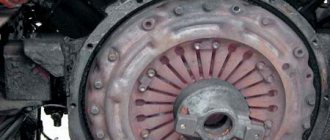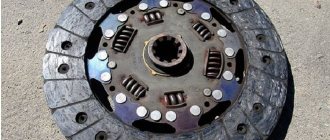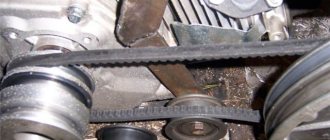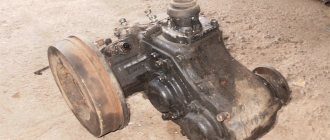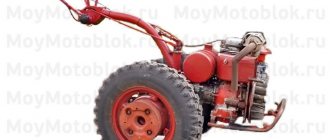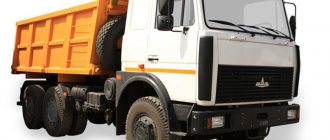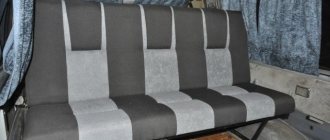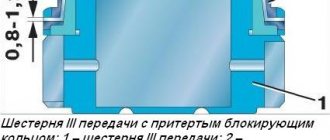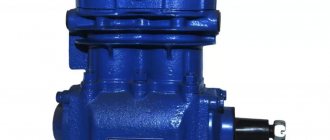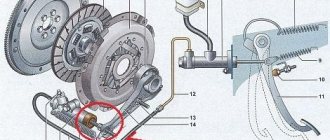The vehicle's clutch serves to smoothly connect the engine crankshaft to the gearbox shaft in order to transmit torque further through the transmission to the wheels. Why is there a need for such a smooth connection? — The fact is that the engine, which is the source of movement and torque for the car, has a certain rotation speed. And this engine speed is much higher than that needed to rotate the wheels. This means you need to lower the speed in the engine-wheel connection. A gearbox (gearbox) is used for this purpose. But in order to smoothly connect the gearbox to the engine, or vice versa, to completely disconnect the gearbox from the engine, a clutch is used.
Types of clutch
There are several types of clutch: mechanical (friction), electric, hydraulic, and their combinations. All clutches are similar in operating principle; in fact, they are mechanical with various modifications that meet the specified conditions of comfort and operation. Structurally, the clutch consists of several elements, the combination of which determines the type of clutch:
- single and double flow. On passenger cars, a single-flow clutch is used. double-flow is used on tractors and special equipment to rotate the power take-off shaft;
- by friction: wet (in oil) and dry (in air);
- permanently closed (used on passenger cars) and non-permanently closed;
- by the number of available slave disks: 1-disk (the most common), 2-disk and multi-disk.
- depending on what kind of springs are used, there can be the following types: with a diaphragm (in the center) spring and with cylindrical (circumferential) springs.
Currently, the most common type of clutch found on cars is a single-plate dry type clutch.
Design features and operating principle
A mechanical clutch does its job using frictional . The hydraulic type of connection between the motor shaft and the gearbox shaft occurs due to fluid . The electromagnetic type works due to a magnetic field.
The electromagnetic type of clutch can be understood from the operating principle of the electric fan coupling.
The hydraulic clutch type is most often used in conjunction with automatic transmissions.
the mechanical type of clutch below.
Clutch drive types
The clutch mechanism must be controlled so that the transmission is connected/disconnected from the engine at the right time. There are different designs for clutch control: Mechanical, Hydraulic, Pneumatic and Electrical.
The mechanical clutch drive was widely used in the early and mid-20th century. Its main advantage is low cost and simplicity. The downside is the large number of rubbing parts that can fail.
The principle of operation of a mechanical drive is simple: when you press the pedal using a lever transmission, the cable is tensioned and pulls the clutch release fork, which compresses the spring through the clutch and bearing - the clutch is disengaged. The pedal is returned by a spring. Adjustment of the free play of the pedal, as well as compensation for wear of the friction linings on the discs, is carried out using an adjusting nut located at the end of the cable.
Mechanical clutch release drive
The hydraulic clutch drive has replaced the mechanical one. The hydraulic clutch drive uses the principle of transmitting force using an incompressible fluid. The drive device is not very complicated. Drive components: Clutch pedal, Master cylinder, Slave cylinder, Hydraulic drive line and reservoir with working fluid.
Hydraulic clutch release for vehicles of the UAZ-31512 family: 1 – cover; 2 – filter mesh; 3 – tank; 4 – hydraulic tube; 5 – clutch main cylinder; 6 – bypass hole; 7 – compensation hole; 8 – washer; 9,18,21,26 – springs; 10 – inner cuff; 11 – fitting; 12 – piston of the main cylinder; 13 – outer cuff; 14 – protective cap; 15 – main cylinder pusher; 16 – pedal axis; 17 – fork; 19 – pedal; 20 – coupling; 22 – ball joint; 23 – clutch release fork; 24 – hydraulic hose; 25 – working cylinder; 27 – cap; 28 – bypass valve; 29 – cuff; 30 – piston of the working cylinder; 31 – pusher; 32 – cap; 33 – lock nut; 34 – screw-in part of the pusher
Hydraulic clutch release for vehicles of the UAZ-3741 family: 1 – reservoir; 2 – main cylinder; 3, 5 – hydraulic pipes; 4 – coupling; 6 – pedal; 7 – hydraulic hose; 8 – working cylinder; 9 – spring
Some vehicles use a vacuum or pneumatic drive booster. Its installation makes driving easier.
UAZ 3962 “Gray” › Logbook › Installation of VUT and Toyota GTZ on UAZ.
I raised the VUT by 10 centimeters or so... so that the winch could fit. I had to cut a small triangle on the VUT bracket, I think the strength was not affected) The brakes are fire. The pedal stroke - the first 30% of the stroke looks like idle, I think this is a sample of the shoe clearance, then the brakes skid, you have to get used to it.
PS. Connection of tubes: as in the photo. When pumping, the dropper hose on the front wheels was torn off, it presses perfectly))) PS 2 - the Toyota nuts were drilled out with a drill to 6.2-6.3mm
PS3 - I’ll add, yesterday I drove a brand new half-loaf, it has disc brakes in front, it brakes normally, really well) it’s the same for me now))))
Mechanical clutch design
Clutch of UAZ-469 cars: 1 – lower part of the clutch housing; 2 – flywheel; 3 – driven disk; 4 – pressure disk; 5 – front bearing; 6 – crankshaft; 7 – input shaft; 8 – needle bearing; 9 – clutch housing; 10 – pull lever finger; 11 – pull lever; 12 – axis of the pull lever; 13 – pull-out lever roller; 14 – fork of the pull lever; 15 – adjusting screw; 16 – clutch release spring; 17 – clutch release clutch; 18 – clutch release bearing; 19 – pressure spring; 20 – clutch casing; 21 – heat-insulating washer; 22 – plug; 23 – bearing lubrication hose; 24 – oiler bracket; 25 – oiler body; 26 – oiler cover; 27 – toothed washer
The structure of a mechanical clutch usually consists of one or more friction discs that are compressed with the flywheel or with each other by springs.
The flywheel is bolted to the engine crankshaft. It is used as a master disk. It is now common to use a dual-mass flywheel, which stabilizes torque loads on the shaft. Both parts of it are connected to one another by springs.
The basket can be push-type (the petals move inward, towards the flywheel) and pull-out type (for example, on some French models). Each type has its own release bearing. The basket is secured to the flywheel with bolts.
DIY replacement
First you need to drain the remaining liquid in the system. This can be done using a syringe. This operation is necessary to flush out dirt from the hydraulic drive system. On some models, access may be blocked by the cooling system expansion tank. For convenience, remove the container’s fastening nuts and remove the hose. It should be unscrewed with a 10mm wrench. Next, we dismantle the metal tube that comes from the clutch master cylinder. It can be copper or aluminum. After this, we remove the main cylinder, having previously unscrewed the two fastening nuts with a 13mm wrench. Using a 17 socket, you need to remove the hose that comes from the working cylinder. Next we will need the key for 13 again.
Working principle of mechanical clutch
The flywheel is attached to the engine crankshaft and acts as a drive disk. Attached to the flywheel is a “sandwich”, assembled in a basket, made of a pressure and driven disk (the driven disk is connected to the gearbox). The pressure plate is pressed by a diaphragm spring to the driven disk (with friction linings), and that to the flywheel. Thus, the torque is transmitted to the gearbox through friction force.
To turn off torque transmission, you need to disconnect (turn off) the flywheel clutch with the driven disk. To do this, you need to press the diaphragm spring and move the pressure plate away from the driven one. This is done through the release bearing and clutch drive.
The positive aspects of SUVs
SUVs such as UAZ 469, UAZ 3303, UAZ 3909 and other cars of the Ulyanovsk Automobile Plant have shown their high cross-country ability, which for many citizens of our country is a top priority, especially during spring thaw or deep snow in winter in rural areas.
Thanks to all-wheel drive and high ground clearance, a harmonious combination of engine power and transmission, it was possible to create unpretentious all-terrain vehicles that work well in harsh winters and hot summers.
It should be noted that these cars were tested by designers in different field conditions for years. And the fact that SUVs made in the USSR were in great demand in the world leaves no one in doubt. They were supplied to all continents; 100 foreign countries appreciated the quality of Soviet technology.
Types of friction linings
Organic - Friction material that is used on 95% of all types of clutches used today. Organic overlays are cheap and unpretentious. It is for these reasons that they are used by automobile manufacturers for cars aimed at comfortable everyday use. Many tuning brands of clutches have enhanced organics in their line, which differs from the factory ones in the higher quality components of the friction material, the heat resistance of which does not exceed 250°C. But these clutches can be called reinforced not so much because of a higher quality composition, but rather because the kit includes a basket with increased downforce.
FiberTuff is a new innovative friction material that features a blend of ceramic filler, carbon fiber and Kevlar, designed to be a wear-resistant, high-strength, high-temperature resistant alternative to organic linings. In terms of frictional properties, FiberTuff linings are very similar to organic linings. But they can withstand 10-15% more torque than organics (without increasing downforce). The service life of this composition is 2-4 times longer than organic. Heat resistance increased to 400°C. When using this clutch, there is an improvement in the clarity of clutch engagement.
Kevlar - friction linings made of Kevlar fiber - a polymer material that came to the automotive industry from the aerospace industry. Kevlar is also used to make bulletproof vests and the bodies of supercars like the Ferrari Enzo - parts that are very strong and very light. Kevlar clutches have a wear resistance that is 5-10 times greater than organic linings. They have increased heat resistance and do not wear out the working surfaces of flywheels and pressure disks. But during installation they require proper installation - the linings are very sensitive to cleanliness and quality of installation, and then a delicate running-in is required for at least 1000 km. The heat resistance of Kevlar linings reaches 370°C. A clutch disc with such linings is well suited for long-term hard use of the machine.
Metal ceramics come in different types: aluminum, cast iron, copper. Most manufactured clutches use metal-ceramic linings made on a copper base. Clutch discs with these linings have a high coefficient of friction and can withstand very high temperatures (up to 600°C). They are very popular in motorsport and tuning, since with equal disc sizes the transmitted torque can double. The disadvantage of such linings is their aggressiveness towards mating parts. They wear out the friction surfaces of the flywheel and basket pressure plate relatively quickly. Therefore, they are recommended for use only on sports and racing cars.
Carbon - clutches based on carbon composites. The main feature is that the pressure and driven disks, as well as the mating surface of the flywheel, are made of carbon. It provides the necessary coefficient of friction (since the coefficient of friction of carbon on cast iron is very low) and maximum wear resistance. This mechanism has an incredible temperature limit (2500°C). Durability is 5 times higher than “organic”. The only drawback is the high cost.
In detail from the old classics. Much Posted: Makhno, May 21, 2000 2:59:59 PM
So, about repairing the clutch basket. I promised to write for a long time, but it didn’t work out, all sorts of things got stuck, NOT automobile ones, and to such an extent that I haven’t been able to start assembling a new engine for the second month. Well, okay, it will be in time. Now listen to another Father’s fairy tale.
DON'T THROW AWAY, SON, OLD SPARE PARTS, ESPECIALLY THE BASKETS FROM THE 21st VOLGA. DO NOT NEED LUBRICANT YET, WRAP IN A RAG, AND PLACE IN A DRY PLACE. MAYBE THEY WILL BE USEFUL.
On the eve of the above-mentioned assembly of a new engine, we had to face the following phenomenon, which, however, was completely PROGRAMMED by the entire course of OUR history, namely: THE QUALITY OF SPARE PARTS. It looked like this. I had several baskets from the 21st and UAZ, different years of production, from the 50s to the present time. Everything is used, obviously, but with intact casings and very decent pressure plates, even, without c.l. traces of work on rivets. And the only bad thing about them, at first, experienced glance, was the condition of the axles-legs-fungi: on the axles and in the holes of the legs there were traces of needles and rollers, and the fungi, of course, were fairly damaged by the release bearings. Along the way, I noted (and at one time told the respected Confe my observations) that the QUALITY OF ALL PARTS IS PROPORTIONAL TO THEIR AGE - the older their age, the greater (higher) their quality, the cleaner they are made and the higher the quality of their material. But, being a Russian person (this is not nationality, but a way of life + fate), and, of course, harboring well-known (and ineradicable in all of us) illusions, and being weighed down financially (well, really, what’s the point of buying two new baskets, if it is ENTIRELY POSSIBLE to repair the 4 available), I took 200 rubles and went to the store. And I bought (well, to think a little about my own observations!) 2 sets of these same parts. I brought them home, put them in a separate box, then all sorts of worries piled up and I only picked them up about 2 weeks later (too late to change them!). When I looked at them CAREFULLY, I realized that the surname of my direct ancestor in the first generation (I bear my mother’s surname) does not mean anything - I am RUSSIAN 10,000 times. ALL the parts were made from the material that should be used to make NAILS; they were perfectly processed with a file, and the bearing surfaces of the holes in the legs, which should be smooth and shiny, were made with a blunt drill with a diameter exactly 0.5 mm larger than required . Putting such parts on your beloved Mashenka would be a MULTIPLE crime both against her and against yourself, especially since a multi-year long-term program was planned for the engine, namely balancing a new, stuffing box CV WITH TWO BASKETS. Having understood EVERYTHING about myself, and deciding that spending could not be avoided, I went back to the shops. But now I was already smart - I took a small needle file with me. I come, ask to see the basket, turn it over in my hands and discreetly try its details with a file. One store, a second, a fifth. TIRED! ALL BASKETS ARE MADE FROM St3. . ALL THEIR DETAILS. After 5-10 thousand km. run, such baskets will have to be thrown into the hazel tree or repaired from the same perspective, wasting energy and nerves and KNOCKING OFF THE BALANCE. This means that the problem cannot be solved with money. I come home, clean the workbench, lay out what I have, and look carefully. The UAZ basket from 1995 is a little better than the ones I saw in stores, but the same thing, and the protrusions of the pressure plate, designed to fit in the slots of the casing, are a little low and have cut through these very slots with their cast-quality edges TO THE TRASH! There are 3 baskets left from the 21st Volga. But their internal diameter of the pressure plate is 5 mm smaller than that of the UAZ; our driven disk is not included! Okay, we can sharpen it, it’s not a hindrance for us, especially since it’s all the same - balancing. Let's look further. The axles and tabs are made of GOOD metal, a file will not take them (as well as pressure plates!). Well, there are, of course, traces of indentation of the needles and roller, but, on the other hand, they can be regarded as the maximum possible deformation. The contact areas have increased MANY TIMES, and are unlikely to increase further, especially since I have not disassembled anything - every detail is marked, and will continue to work IN ITS PLACE with old friends. I rummaged around in the bins and found a handful of old-fashioned, untrodden fungi - a file won’t take them either. FINE. BUT THE TOTAL DEFORMATION of the entire system of legs is about 1 mm. When assembling the basket, this leads to the fact that the fungal end of the foot moves towards the flywheel by approximately 5-7 mm and, in order to maintain the standard size from the top of the fungus to the plane of the flywheel, the fungus will have to be strongly turned out of the foot. And the fungus is a tricky detail: if you turn it out a little more, its locking slot will go inside the threaded hole in the foot; you won’t be able to lock it! And vice versa - if you screw it in almost all the way, the bottom of the slot will come out of the thread again and you won’t be able to lock it! And it is NECESSARY to maintain the mentioned size, otherwise the geometry of all the levers and the foot itself, and, most importantly, the release bearing fork, will greatly change, which will lead to an increase in the force on the pedal and its travel.
A little about the history of the creation of the Soviet SUV
Initially, the UAZ 469 was developed as an all-terrain military vehicle, which was intended to replace the older GAZ -69 model. The car was developed from the mid-60s, and began to be mass-produced in 1972; its further modification was the UAZ-3151 (produced since 1985). The civilian modernized version was the UAZ-315195 Hunter. Three years ago, the Russian Ministry of Defense completely refused to supply UAZ, switching to other types of SUVs. Although UAZs have proven themselves in the army as reliable, unpretentious vehicles, they are very outdated.
The familiar Loaf model
The UAZ 3303 commercial truck became a further modification of the famous “loaf”, a family of cars from the Ulyanovsk plant, including the very first UAZ 450. It began to be mass-produced back in 1958. The car became the first independent development of the plant, based on the components and assemblies of the GAZ-69 and GAZ-21. The very first tests exceeded all the designers' wildest plans; the car confidently overcame even snow cover 50 cm deep, and also drove along a tank track with a load of a ton of weight. The development of the SUV began in the mid-50s, prototypes appeared a month later.
Since the GAZ 69 had an unsuccessful wheelbase, the new car had to use a carriage layout, which was developed in two modifications:
- a truck with a wooden body;
- all-metal van.
To ensure the necessary rigidity of the body, ribs were developed on the roof of the van, which visually resembled a loaf of bread. In the mid-late 80s, the “loaf” underwent modernization, the engine remained old, but boosted to 90 horses. The SUVs were equipped with an improved dual-circuit braking system and a vacuum clutch release amplifier, and the bridges were also modernized. The names have changed once again.
There appeared the UAZ-3303 - a light-duty flatbed truck, the UAZ-3741 - a multi-purpose van, the UAZ-2206 - a minibus, and the UAZ-3962 - an ambulance. Ten years later, the plant began experiments to improve the characteristics and improve the “loaf”; a variety of cars were produced, in particular, the “Farmer” family, but in the early 2000s the management changed, all new projects were canceled, and since then they have been producing one modification - van.
